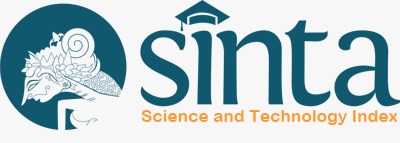PEMILIHAN METODE AKUNTANSI PENILAIAN INVENTORI DAN VARIABEL YANG MEMPENGARUHINYA
DOI:
https://doi.org/10.31937/akuntansi.v13i2.2026Abstract
Abstract” Business activities or running a company must be calculated carefully, so that the company's goal of making a profit can be realized. The amount of profit earned by the companycan be affected by the amount of the cost of goods sold. Companies can adjust the amount of the cost of goods sold so that it is not too large by choosing the inventory valuation accounting method. The accounting methods for valuation of inventories are recognized based on PSAK 14, namely the average method and the FIFO method. This research was conducted to determine the effect of company size, Current Ratio, and leverage on the selection of accounting methods for inventory valuation in manufacturing companies and trading companies listed on the Indonesia Stock Exchange. This research uses a quantitative approach and the type of data used is secondary data. The research population is the financial statements of manufacturing and trading companies listed on the Indonesia Stock Exchange in 2017-2019. The sampling technique used was purposive sampling, Logistic regression analysis is a data analysis method used in this study. This study provides the result that company size has a negative effect on the choice of accounting method for inventory valuation in manufacturing companies, while trading companies do not have a significant effect. The choice of accounting method for inventory valuation is not influenced by Current Ratio and leverage in both manufacturing and trading companies.
Keywords: Company Size; Current Ratio; Inventory Valuation Accounting Methods; Leverage
Downloads
Downloads
Published
How to Cite
Issue
Section
License
Authors retain copyright and grant the journal right of first publication with the work simultaneously licensed under a Creative Commons Attribution-ShareAlike International License (CC-BY-SA 4.0) that allows others to share the work with an acknowledgement of the work's authorship and initial publication in this journal.
Authors are able to enter into separate, additional contractual arrangements for the non-exclusive distribution of the journal's published version of the work (e.g., post it to an institutional repository or publish it in a book), with an acknowledgement of its initial publication in this journal.
















